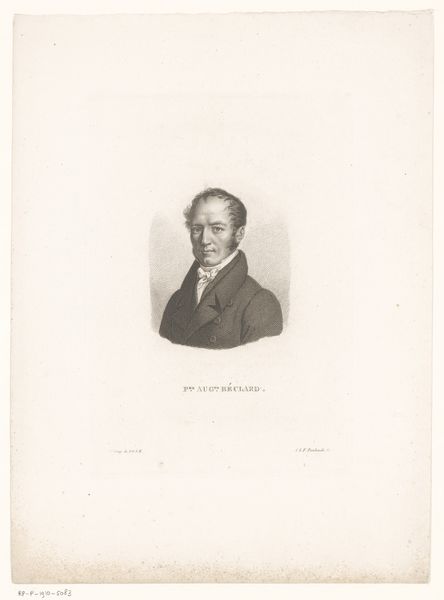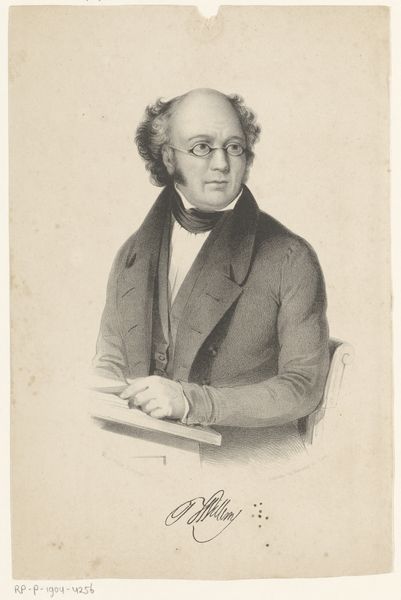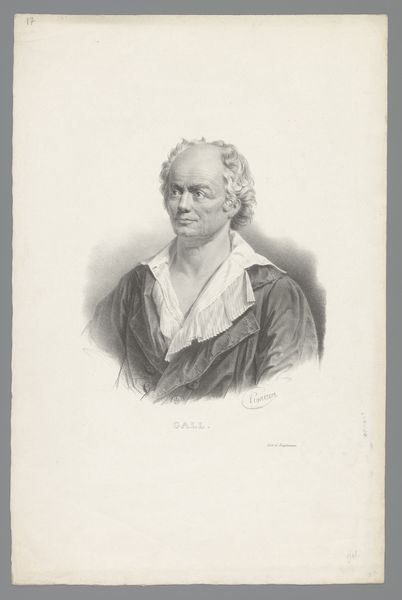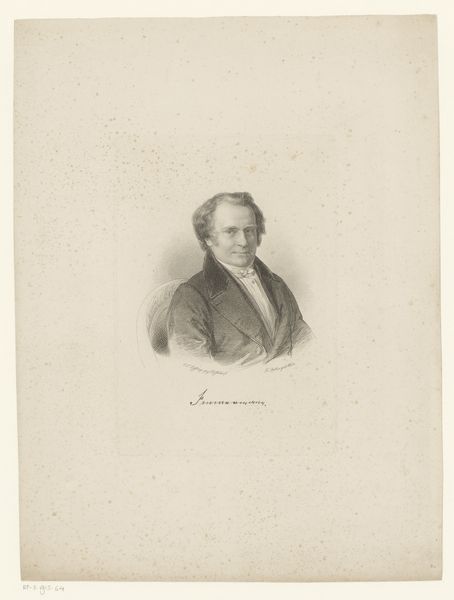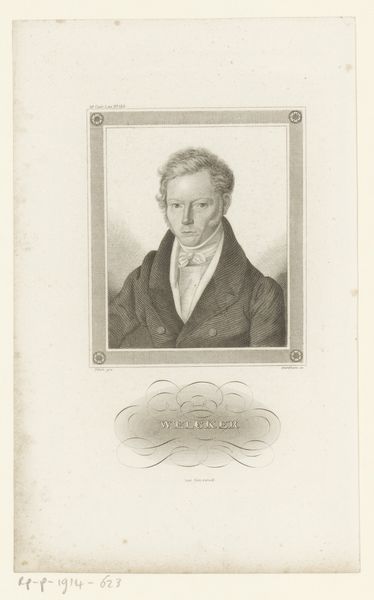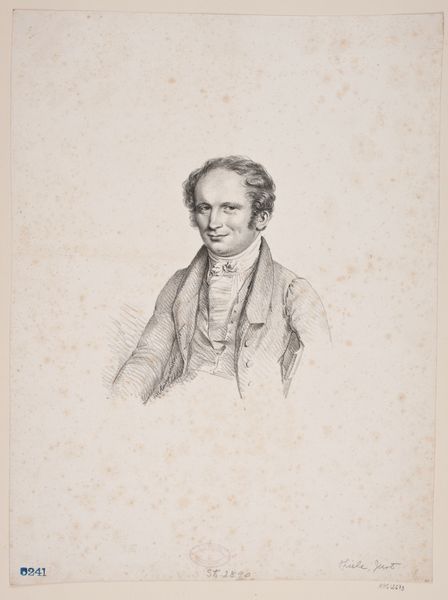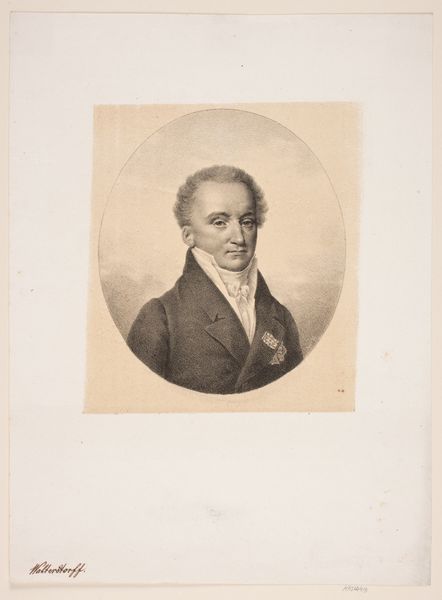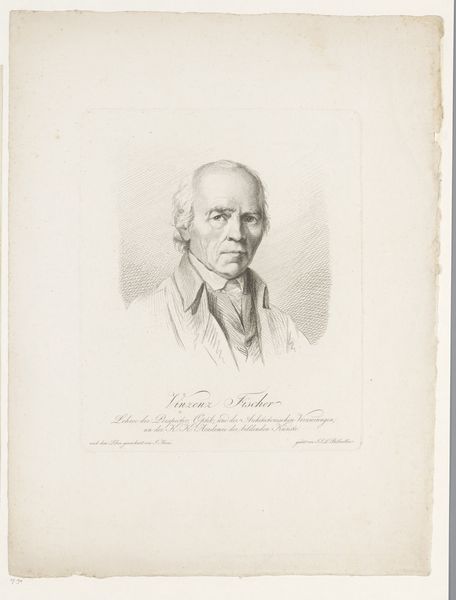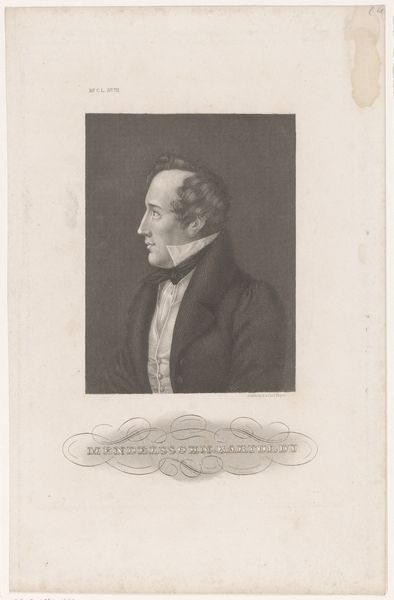
engraving
#
portrait
#
neoclacissism
#
light pencil work
#
light coloured
#
form
#
line
#
engraving
#
realism
Dimensions: height 238 mm, width 146 mm
Copyright: Rijks Museum: Open Domain
Curator: Here we have an engraving from around 1830 of Christophe-Philippe Oberkampf. Editor: There's a distinct sense of poised intellect in those meticulously rendered lines. Notice the balance—the strong, dark coat contrasting with the brightness of his face. Curator: Absolutely, the rendering speaks to the Neoclassical focus on clarity and form, especially apparent given that Oberkampf was a celebrated industrialist known for his printed textiles. Portraits like these reinforced the status and contributions of individuals within a rapidly changing society. Editor: Indeed. The lines of the engraving are quite economical, aren’t they? It is as though each etched stroke had a precise purpose, defining contours and hinting at volume through subtle shading. A perfect dance of line and light. Curator: Such depictions were essential for projecting an image of capability and reliability. Oberkampf’s factory significantly impacted French commerce and industry. Hence, his depiction reinforces that impact on the French public. Editor: It is compelling to note how the engraver’s realism is not merely imitative; there's an expressive intent, capturing the textures of the coat and the soft luminescence of his skin, thus transcending pure representation. Curator: Beyond that, it is the very notion of this kind of printed reproduction that's so important. These kinds of images were meant to circulate. Oberkampf's face, through engravings like this one, became synonymous with success. Editor: I concur. And from a visual standpoint, its formal constraint allows it to endure beyond the ephemerality of trends, offering continuous viewing pleasure long after its production. Curator: A worthy note. Understanding the context, it makes you realize the political forces always shaped such imagery, not just pure visual aesthetics. Editor: A vital consideration and conclusion! Curator: Yes. It highlights the rich interplay between societal influences and the creative expressions of its time.
Comments
No comments
Be the first to comment and join the conversation on the ultimate creative platform.
